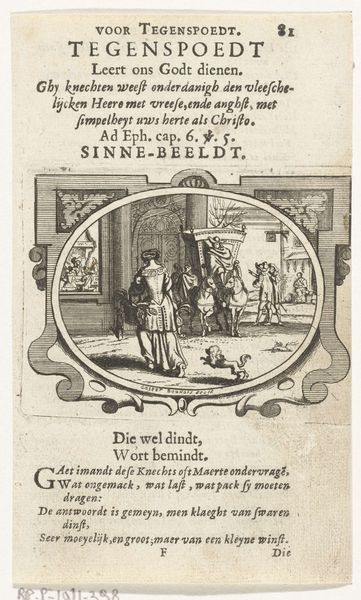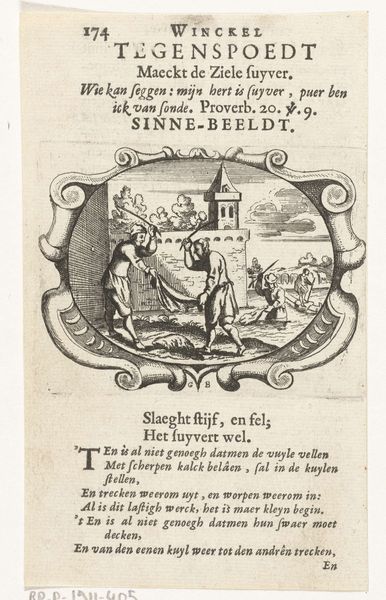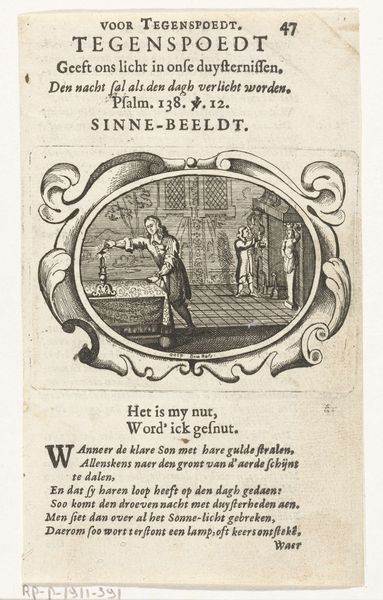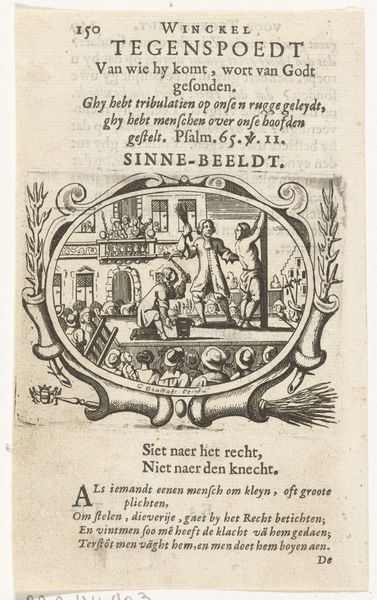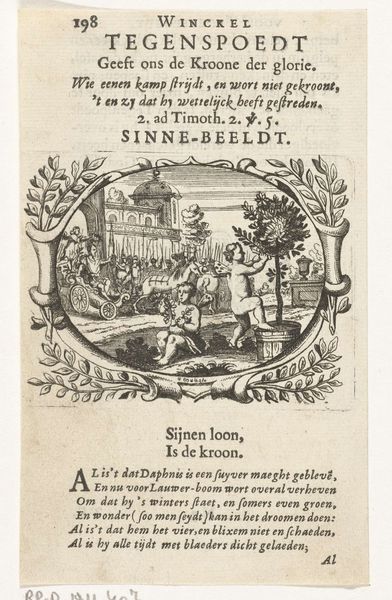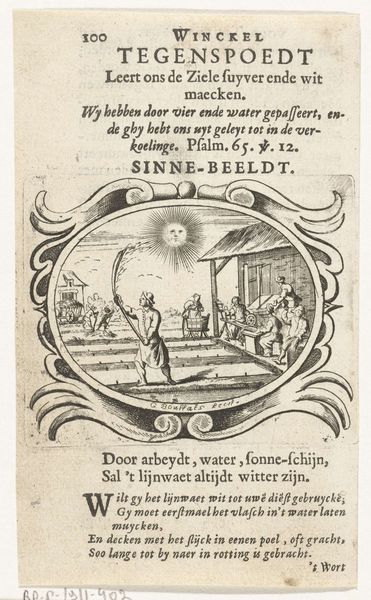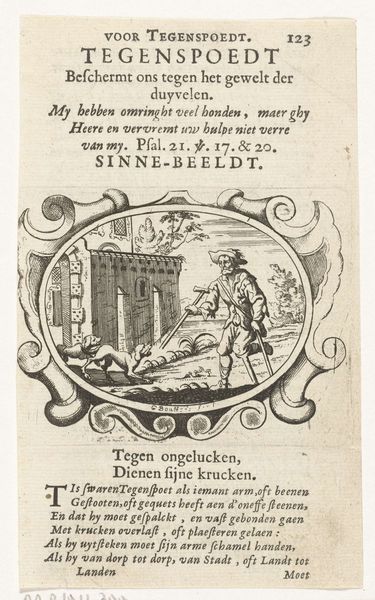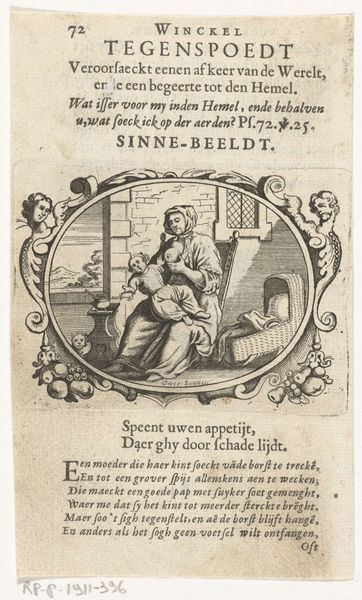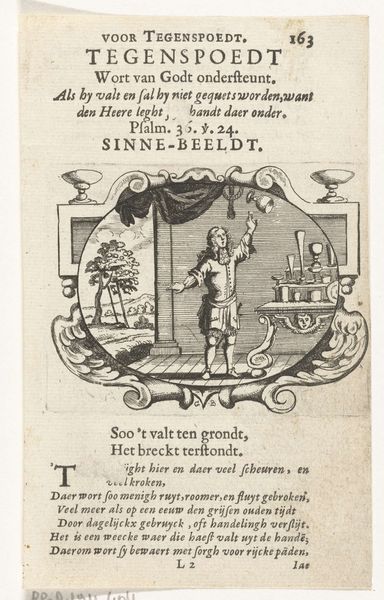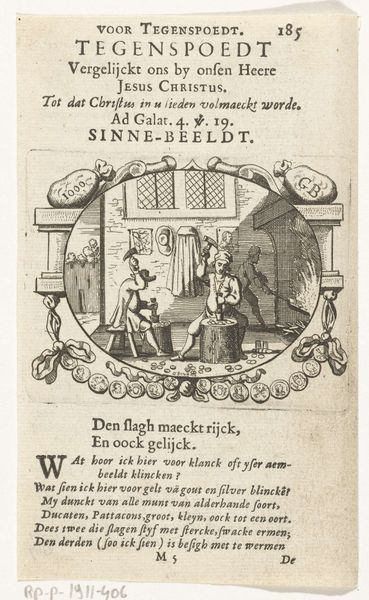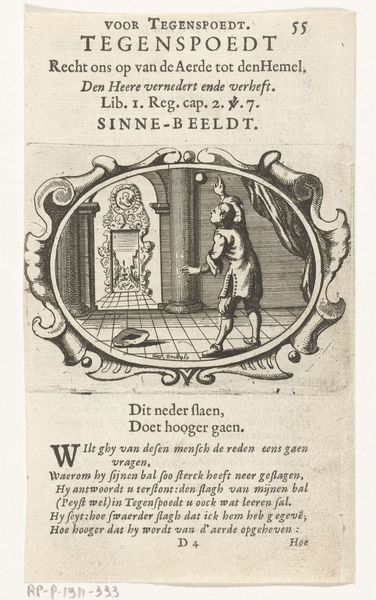
print, engraving
#
narrative-art
#
baroque
# print
#
landscape
#
figuration
#
line
#
genre-painting
#
history-painting
#
engraving
Dimensions: height 144 mm, width 87 mm, height 65 mm, width 83 mm
Copyright: Rijks Museum: Open Domain
Curator: Looking at this print, "Tegenspoed toont ons dat wij echt Gods kinderen zijn," or "Adversity shows us that we are truly God's children," created by Gaspar Bouttats in 1679 and held at the Rijksmuseum, I am struck by its depiction of discipline. It really seems to speak to societal views on raising children. Editor: Absolutely. My immediate reaction is how jarring this image feels. It’s a stark representation of violence, presented almost casually. There is a man, presumably a father, about to strike a child, while others look on. It’s incredibly unsettling when we think about contemporary standards. Curator: It's vital to consider this within its historical context. In 17th-century Dutch society, strict discipline was often viewed as necessary for proper upbringing and religious devotion, evident in the Biblical inscription from Hebrews above the image itself. Think about the Reformation and emphasis on individual piety. Editor: And who decided which behaviours required harsh correction? These power dynamics based on age, gender, and societal norms must have deeply impacted childhood experiences. It raises important questions about who defines "good" behaviour and at what cost. Curator: The print's title further illuminates its purpose. The artwork is meant to teach, and it employs classical conventions using both text and symbolic imagery. In many ways, the work echoes and enforces contemporary perspectives on family, church and state, so while you are critical, it certainly served its purpose. Editor: It does prompt introspection. I'm curious how contemporary viewers interpreted the print's message. Did everyone blindly accept this depiction of discipline? Were there dissenting voices, especially from children, pushing back against such practices? Were their cultural or societal influences influencing the art? Curator: It's certainly valuable to consider potential points of resistance or varying viewpoints during that period, however history tells us children did not hold rights we know today. It presents, instead, the views of the parents and the prevailing politics of the time. It certainly reflects the didactic role art held in this period. Editor: Thinking critically about these prints invites us to question not only the past but also our present values. By examining historical justifications for practices like corporal punishment, we are pushed to scrutinize power structures and assess whose voices are amplified or silenced in current cultural narratives. Curator: Yes, exactly. Thank you.
Comments
No comments
Be the first to comment and join the conversation on the ultimate creative platform.
